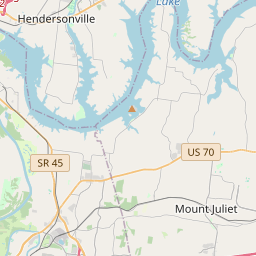Edward F. Geers
Historical marker location:
104 Geers Drive, Lebanon, Tennessee
( Marker is on Geers Drive east of Geers Court, on the right when traveling east.)







© OpenStreetMap contributors
Loading...
Searching for other points of interest within 10 miles of this location.The famous Battle of Franklin during the Civil War was one of the deadliest battles of the conflict. It took place on November 30, 1864, and resulted in over 8,000 casualties, including over 2,000 deaths.
About Wilson County
Wilson County Timeline
Wilson County, Tennessee is situated in the central part of the state and has a rich history that dates back to the 18th century. The area was originally inhabited by indigenous tribes, including the Cherokee and Shawnee, who relied on the fertile land for hunting and gathering.
European settlers began arriving in the late 1700s, with the Cumberland Settlements founded by early pioneers such as James Wilson and his wife, Rachel Donelson, for whom the county is named. The settlement grew rapidly, attracting more settlers and becoming an important trading center.
During the early 19th century, Wilson County played a significant role in the development of the state's transportation system. With the construction of the Cumberland Turnpike, which connected Nashville to the eastern part of the state, the area became a crucial stop for travelers and merchants.
In the mid-19th century, Wilson County experienced the impacts of the American Civil War. Having a strategic location between the Union-controlled Nashville and the Confederate stronghold of Chattanooga, the county witnessed various skirmishes and battles. The Battle of Stones River, fought in nearby Rutherford County, also had a significant impact on Wilson County, as troops from both sides passed through the area.
Following the war, the county began to rebuild its economy and infrastructure. Agriculture, particularly tobacco and corn farming, became the mainstay of the local economy. The construction of the Nashville and Knoxville Railroad in the late 19th century further stimulated economic growth and connected the county to broader markets.
In the 20th century, Wilson County continued to evolve, with advancements in industry and education. The establishment of the Cumberland University in 1842 enhanced the county's educational landscape, while industries such as textiles, manufacturing, and automotive assembly plants provided employment opportunities.
Present-day Wilson County is a vibrant and growing community, known for its picturesque countryside, historic landmarks, and strong sense of community. The county's rich history is celebrated through various festivals and events, which highlight its cultural heritage and enduring spirit.
European settlers began arriving in the late 1700s, with the Cumberland Settlements founded by early pioneers such as James Wilson and his wife, Rachel Donelson, for whom the county is named. The settlement grew rapidly, attracting more settlers and becoming an important trading center.
During the early 19th century, Wilson County played a significant role in the development of the state's transportation system. With the construction of the Cumberland Turnpike, which connected Nashville to the eastern part of the state, the area became a crucial stop for travelers and merchants.
In the mid-19th century, Wilson County experienced the impacts of the American Civil War. Having a strategic location between the Union-controlled Nashville and the Confederate stronghold of Chattanooga, the county witnessed various skirmishes and battles. The Battle of Stones River, fought in nearby Rutherford County, also had a significant impact on Wilson County, as troops from both sides passed through the area.
Following the war, the county began to rebuild its economy and infrastructure. Agriculture, particularly tobacco and corn farming, became the mainstay of the local economy. The construction of the Nashville and Knoxville Railroad in the late 19th century further stimulated economic growth and connected the county to broader markets.
In the 20th century, Wilson County continued to evolve, with advancements in industry and education. The establishment of the Cumberland University in 1842 enhanced the county's educational landscape, while industries such as textiles, manufacturing, and automotive assembly plants provided employment opportunities.
Present-day Wilson County is a vibrant and growing community, known for its picturesque countryside, historic landmarks, and strong sense of community. The county's rich history is celebrated through various festivals and events, which highlight its cultural heritage and enduring spirit.
Wilson County Timeline
This timeline provides a condensed summary of the historical journey of Wilson County, Tennessee.
- 1799 - Wilson County is established by the Tennessee General Assembly
- 1802 - The county seat is established in Lebanon
- 1812 - The county courthouse, known as the "Old Courthouse," is built in Lebanon
- 1838 - The county's first railroad, the Nashville and Lebanon Railroad, is completed
- 1861 - Wilson County secedes from the Union and joins the Confederacy during the American Civil War
- 1865 - The community of Watertown is incorporated
- 1916 - The county's first high school, Lebanon High School, opens
- 1936 - The construction of the Percy Priest Dam begins, creating Percy Priest Lake
- 1968 - The Cedars of Lebanon State Park is established
- 1990 - The population of Wilson County reaches 55,498